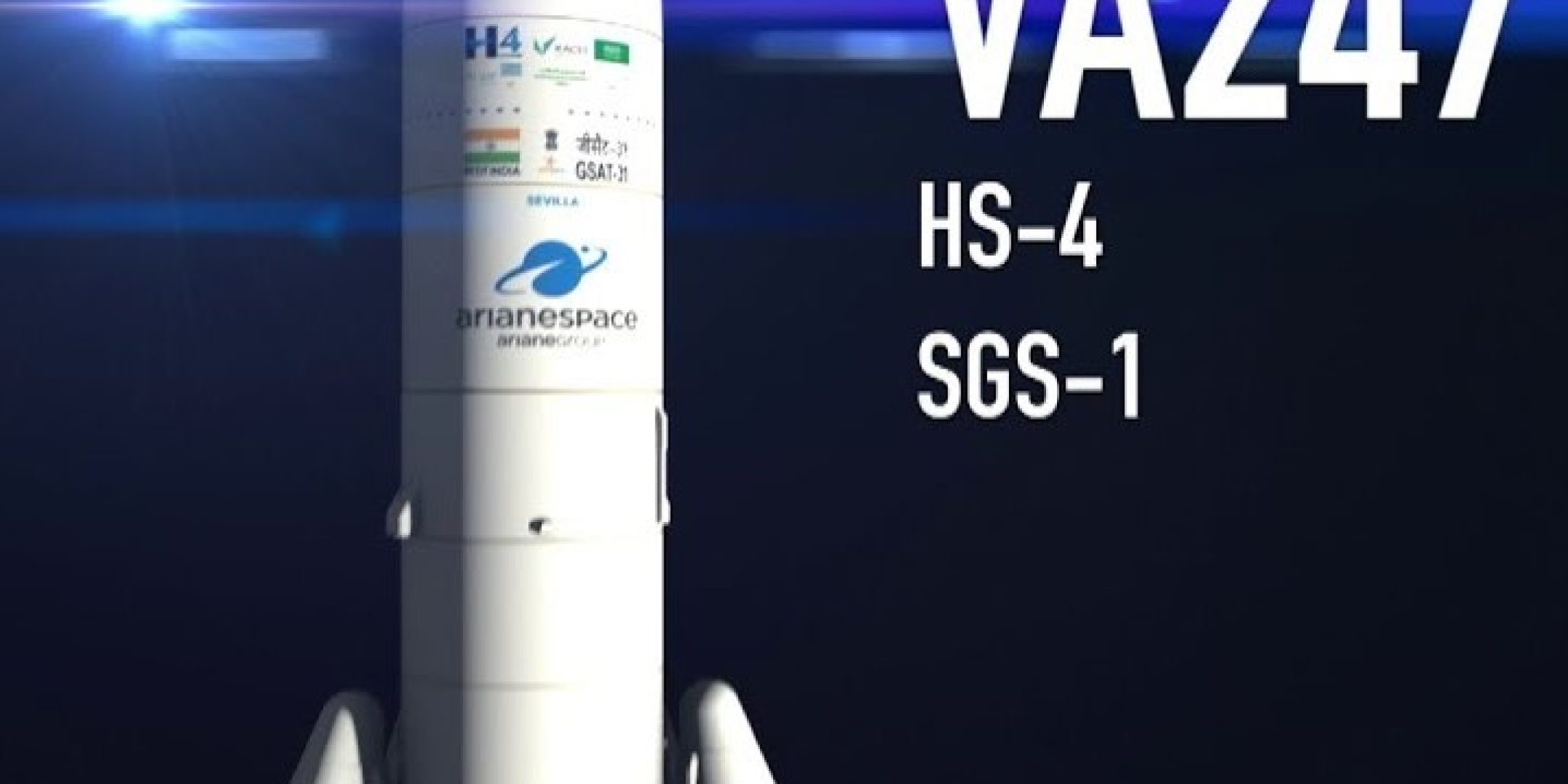Tuesday 5 February, Ariane 5 completed a flawless launch from Europe’s spaceport at the Guiana Space Centre (CSG), placing into geostationary orbit the Saudi Geostationary Satellite 1/Hellas Sat 4 for operators KACST (King Abdulaziz City for Science and Technology – Saudi Arabia) and Hellas Sat (Greece – Cyprus), and GSAT-31 for the Indian Space Research Organisation (ISRO). The launch was the first of the year from the CSG, Ariane 5’s first in 2019 and its 103rd flight in all.
With a launch mass of 6 495 kg, Saudi Geostationary Satellite 1 (SGS-1)/Hellas Sat 4 (HS-4) is a telecommunications condosat designed and built by Lockheed Martin Space. SGS-1 will provide advanced telecommunications capabilities for KACST and secure communications for the Gulf Cooperative Council region. HS-4 will offer advanced regional communications services for Arabsat’s subsidiary Hellas Sat, a Greek-Cypriot satellite operator which provides Direct-to-Home (DTH) services to leading operators delivering content to more than three million households. The satellite has an expected lifetime of more than 15 years, which could be extended to 23 years.
With a launch mass of 2 536 kilograms, GSAT-31 is a telecommunications satellite designed and built by ISRO. With this satellite, ISRO is working to develop India and help bridge the digital divide in the Indian subcontinent by offering significant advantages to users. The satellite has an expected lifetime of more than 15 years.
Hailing this latest success, https://fscience-old.originis.fr/wp-content/uploads/2023/06/GLOC_Oslo_Norway_S2_27juillet2022_web-2-1.jpg President Jean-Yves Le Gall said: “Ariane 5 has been the gold standard for satellite launches for more than 15 years now and has completed its 103rd launch with flying colours, proving once again its reliability and the excellence of the Guiana Space Centre. I would like to congratulate and thank all of the teams to whom we owe this success for their professionalism and expertise, at ESA, Arianespace and across the European launcher industry, at KACST, Hellas Sat, ISRO and of course at https://fscience-old.originis.fr/wp-content/uploads/2023/06/GLOC_Oslo_Norway_S2_27juillet2022_web-2-1.jpg’s Launch Vehicles Directorate and at the Guiana Space Centre.”








